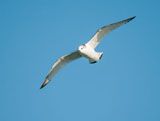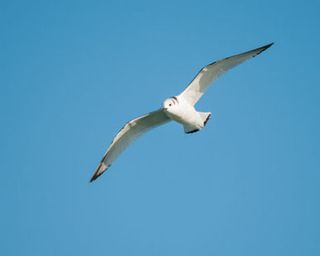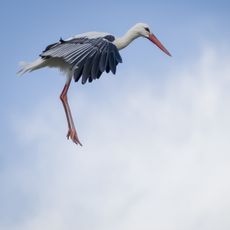Scottish kittiwakes under threat
Researchers into the reasons for the fall in kittiwake numbers in northern Scotland are convinced that climate change is to blame


Scientists are warning that kittiwakes - the elegant gulls that look as if their wings have been dipped in ink - in northern Scotland are being depleted by climate change.
The RSPB says there has been an 87% decline on Orkney and Shetland since 2000. ?Ten years ago, Marwick Head on Orkney was a thriving seabird city, but now it looks like a ghost town,' laments Paul Walton from RSPB Scotland.

Researchers believe climate change is to blame, as rising sea temperatures are causing a shortage of sand eels, the birds' main food source, which they dive 6ft underwater to catch. ?Seven colonies across the islands are essentially lost and another two are heading down the same road. Evidence points to rising sea-surface temperatures driving huge declines and species shifts in plankton populations, which is the food of sand eels,' explains Dr Walton.
Following last week's Intergovernmental Panel on Climate Change (IPCC) report, the RSPB is urging the Scottish Government to act before kittiwakes become extinct in some areas. ?We are calling on the Government to designate key seabird feeding sites as Marine Protected Areas to offer seabirds and sand eels resilience against the effects of climate change,' adds Dr Walton.
The RSPB is also concerned about machair -rare, wildlife-rich coastal grassland, mostly found on Scottish islands- which is under threat from rising sea levels; declining Dartford warblers, which are historically found on heathland in southern England, but are moving steadily northwards due to climate change; and dotterels, which breed only on the highest Scottish mountaintops.
* Subscribe to Country Life and save
* Follow Country Life magazine on Twitter
Sign up for the Country Life Newsletter
Exquisite houses, the beauty of Nature, and how to get the most from your life, straight to your inbox.
-
 A well-connected rural playground with 23 acres on the edge of the South Downs National Park
A well-connected rural playground with 23 acres on the edge of the South Downs National ParkOld House Farm is an impressive family home with a wealth of amenities that would inspire any rural passion.
By Arabella Youens Published
-
 The UK gets its first ‘European stork village’ — and it's in West Sussex
The UK gets its first ‘European stork village’ — and it's in West SussexAlthough the mortality rate among white storks can be up to 90%, the future looks rosy for breeding pairs in southern England.
By Rosie Paterson Published
